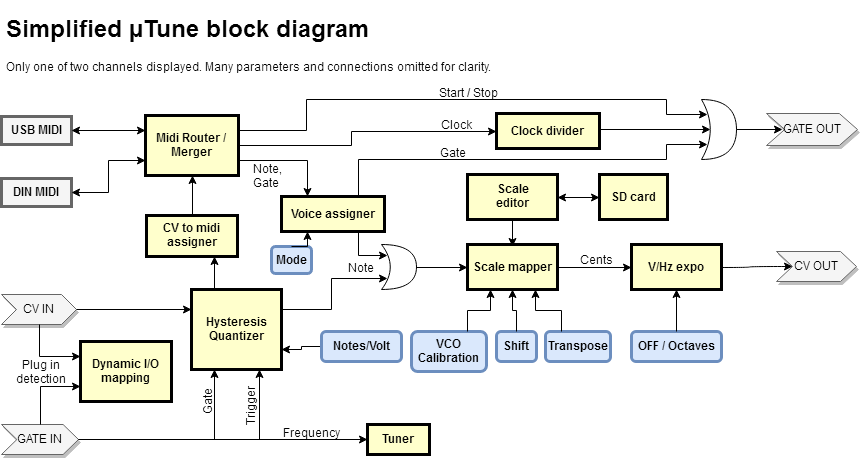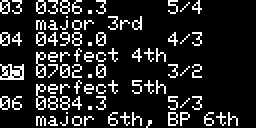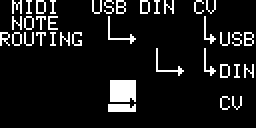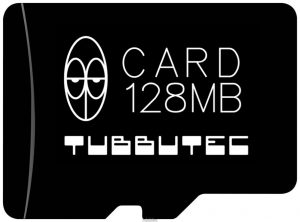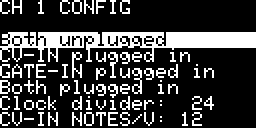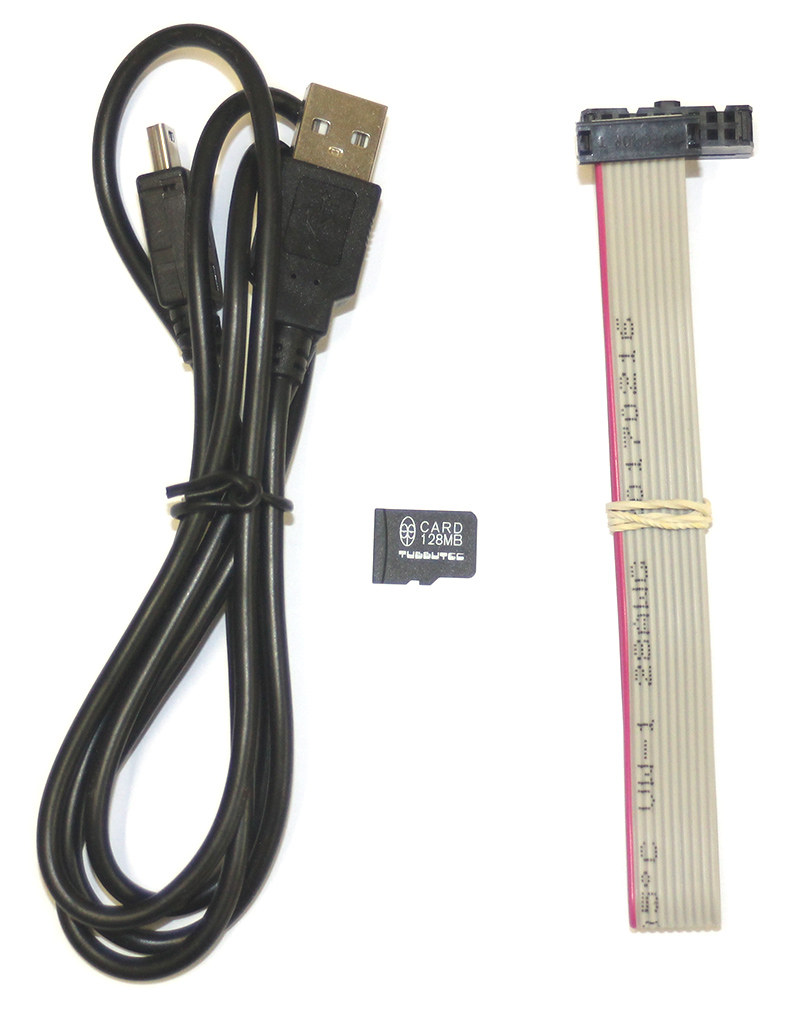
µTune (microTune, muTune, uTune) – modular multitool
Description | Features | User Manual | Order online | FAQ
Description
Main features
- Two independent channels, up to 8 channels with expanders, complete microtonal support.
- Multi channel Midi to CV/Gate interface with various voice assign modes. MPE compatible.
- A multi channel microtonal quantizer / mapper
- Multi channel CV/Gate to midi conversion sends microtonal midi
- A built in scale editor to conveniently edit, load and save scales from an SD card
- Midi router/merger to route midi note and clock data independently between USB, DIN midi and µTune
- Midi to microtonal midi conversion.
- Automatic closed loop VCO tuning keep your VCO in tune at all times.
- Built in clock generator with multiple outputs.
- Automatic trigger output from quantizer
- Freely configurable inputs and outputs. Can detect if input is plugged in and change behaviour accordingly which makes the module extremely flexible
- 10 point VCO calibration to linearise VCO CV response
- High precision 16 bit outputs, resolution about 0.15mV / 0.2cents with a voltage range of 10V
- Built in two channel tuner with a wide pitch range
- V/Hz mode with adjustable precission
- Peripherals: 2x analogue in, 2x analogue out, 2x digital in, 2x digital out, Mini USB B device midi in/out, DIN midi in and out
- Also features: Midi monitor, various alternative note notations, midi note on and off velocity mapping, adjustable midi base notes, transpose and shift scales via CV, pitch bend in, scale masks, and much more…
- Designed and made in Germany
- Comes with: SD card with pre-installed scales, USB Cable Mini B to type A, Eurorack power cable
- For a complete list of features please refer to the user manual.
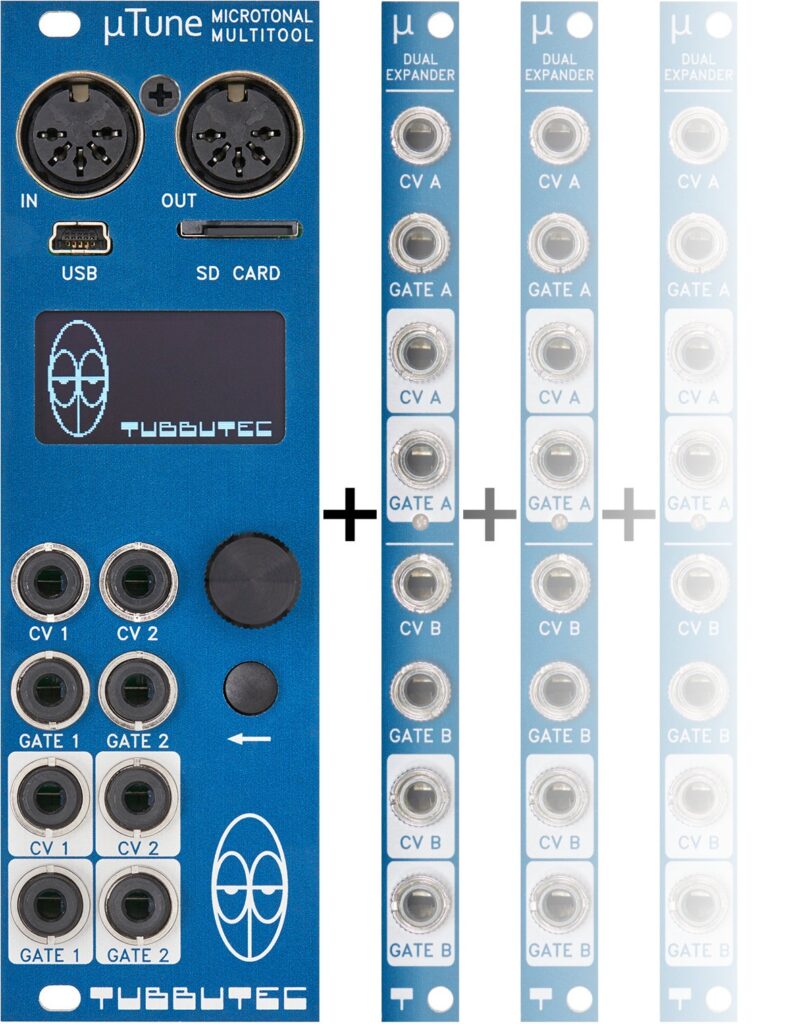
Some features in more detail
Quantizer / Mapper
CV inputs are quantized with adjustable V/Octave step size and use a hysteresis to achieve stable input detection. The detected input value can be mapped to scale degrees, but can also be used to transpose or shift the scale of an other channel. The quantizer can run in continuous, gated or triggered mode.
Midi to CV interface
Tubbutec µTune contains a complete two channel midi to CV/Gate interface. It features various assign modes, such as dual monophonic, multiple polyphonic and random. Mono mode features a ‘last’ note priority encoder which memorizes the last 16 notes. It is also possible to output midi clock and start/stop signals as well as link an output to a midi controller.
Scale editor
File browser
VCO calibration
CV to midi interface
Tubbutec µTune contains a two channel CV/Gate to midi converter. Quantizer output and gate input signals are mapped via the current scale and sent to midi-out as micro tonal midi messages using note on/off and pitch bend messages.
Tuner

MIDI router
V/Hz mode
µTune features a versatile V/Hz mode to directly control vintage synths with linear, rather then logarithmic CV inputs. This has been successfully tested with several synthesizers including Korg MS10, Korg MS20 and Yamaha CS-15.
Firmware update from SD card
Firmware updates with new features can be easily performed by putting a file on the SD card and starting the update. We have many ideas ans are looking forward to make this module even better.
Flexible I/O configuration
Here is a typical example:
– If neither CV-in nor Gate-in are used: CV-out and gate-out are used as midi to cv interface.
– If you then plug in the CV-in, the module switches to continuous quantizer mode, Gate-out sending midi clock date
– Plug in the Gate-in as well and you have a gated quantizer
– Plug in the gate-in only and it is used to randomly transpose the output pitch.But of course much more is possible.These I/O functions are currently supported:
CV out: microtonal pitch, velocity chan1, velocity chan 1/2, after touch chan 1/2
Gate out: Midi gate, midi clock, midi start/stop, pass from input
CV in: map to pitch, transpose chan 1/2, shift scale chan 1/2
Gate in: quantizer trigger, quantizer gate, measure frequency, trigger random transpose chan 1/2
Technical data
- Printed aluminium front panel, 2mm thickness
- Supply voltage: +-12V and/or +-15V
- Supply current: +12V: 50mA (depending on the SD card up to 100mA), -12V: 15mA, 5V: 0mA
- Dimensions: 3HE, 8HP, 128.5mm x 40mm, Depth: < 30mm (including power connector)
- 16Bit DAC, resolution ~0.15mV or 0.2cents
- Input / output voltage range 0..10V (10 octaves)
- Digital outputs: 0V/5V or 0V/12V (selectable by jumper)
- Digital inputs 0..15V (High at about 1.5V)
- 1.3” 128×64 OLED display
- Weight: 82g
FAQ
Does the tuner function with waveforms different than square or saw?
Pitch detection works with any common waveform: square, saw, triangle, sine, etc. But not with waveforms which have multiple riding zero crossings per period. If you have a FM waveform, I recommend turning down the modulator, calibrating and turning it up again.
What is the precision of the tuner?
Precision is much better than 0.1Hz but precision of the reading also depends on how stable your VCO is. The tuner uses filtering to get a stable reading, but if your VCO has a very unstable pitch, the reading will fluctuate.
User manual
A complete user manual for Tubbutec µTune can be found as pdf here:
>µTune user manual for firmware v2.06 (PDF)
>µTune user manual for firmware v1.xx (PDF)


